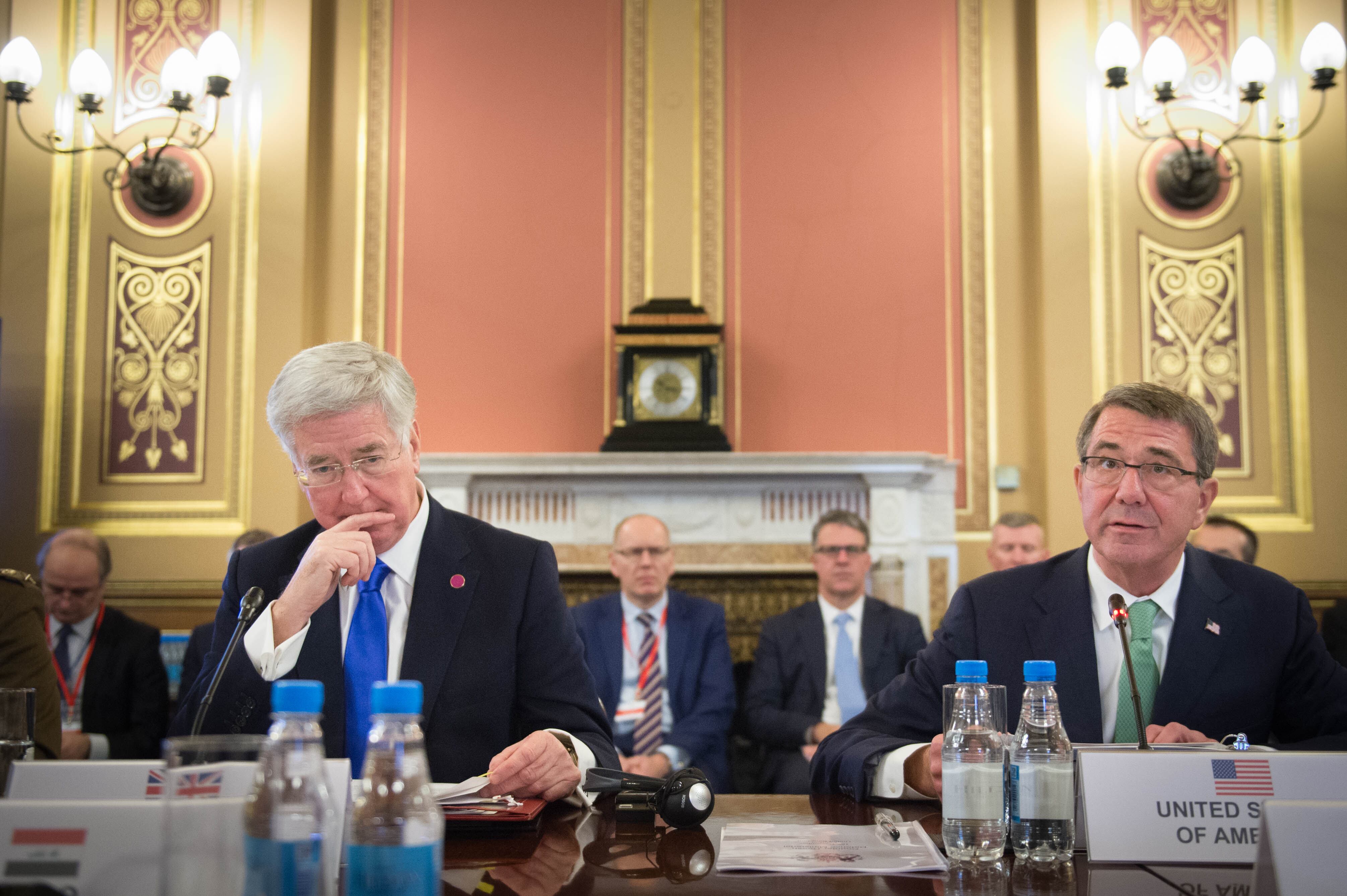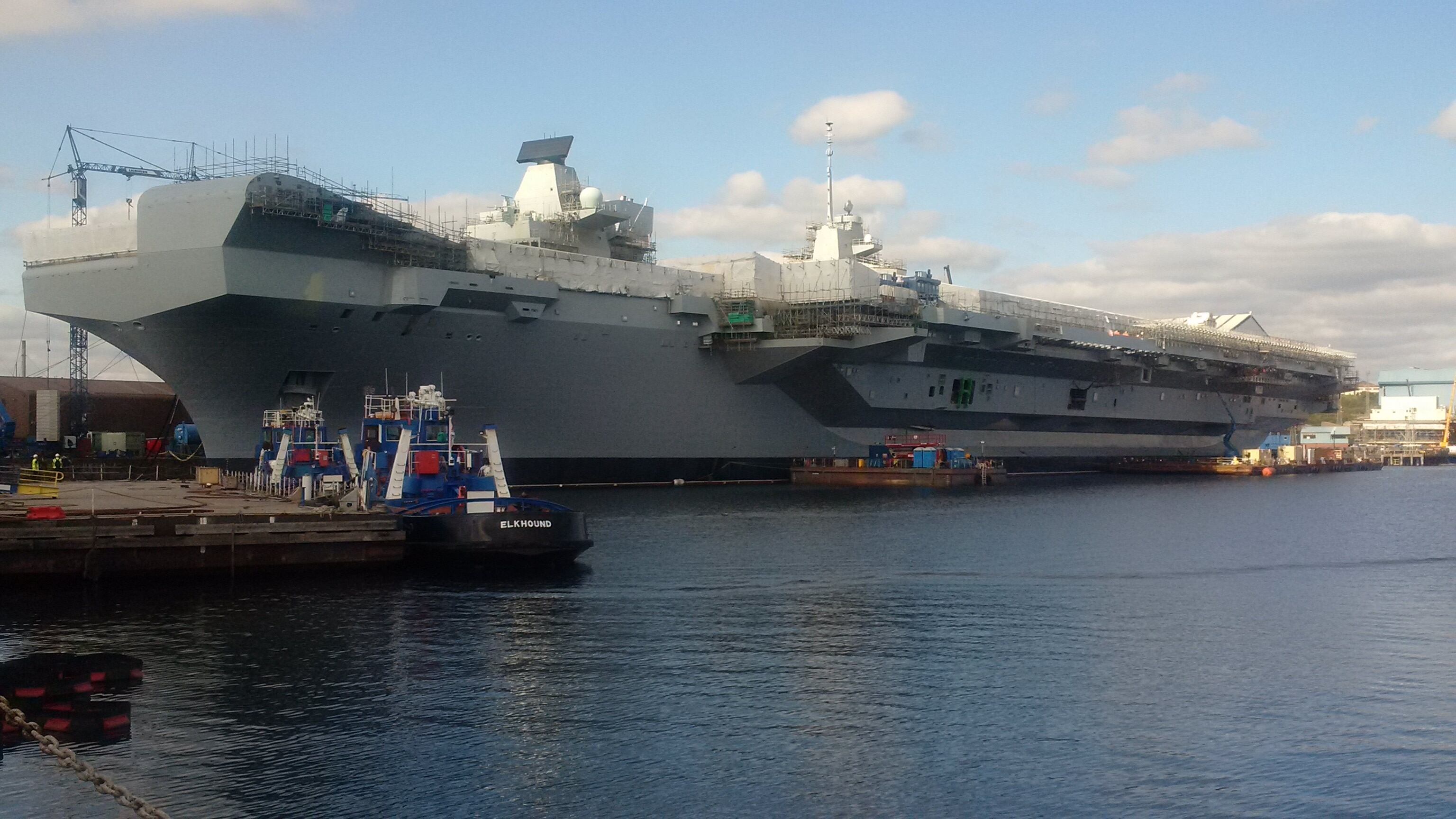LONDON — US Marine Corps F-35Bs are to be deployed onboard the British Royal Navy's new Queen Elizabeth-class aircraft carrier when it undertakes its first operational tour, the two governments have announced.
British Defence Secretary Michael Fallon and his US counterpart, Ash Carter, signed the deal Dec. 15 on the sidelines of a UK-hosted meeting of the coalition fighting the Islamic State group.
The intention to deploy US Marine F-35s was announced in September this year, but the formal signing confirms the deal.
Both forces will operate the F-35B short takeoff and vertical landing version of the Lightning II strike jet. It's unclear at this stage how long the US Marine deployment will last or whether the service will also deploy V-22 Osprey aircraft as part of the package.
A Ministry of Defence spokeswoman said the agreement allows for deployment planning to continue, but did not offer additional details.
In late September, Capt. Jerry Kyd, the commander of HMS Queen Elizabeth, said he would like to see US Marine Corps F-35Bs and V-22s embark for up to nine months at a time once the warship becomes operational.
"We'll certainly see some footprint aboard the ship. The big question is: Do they deploy with us much longer term in the future, maybe for six, seven, eight, nine months from when we deploy? That's what I would love to see," the naval officer told reporters during a briefing.
The first of two 70,000-ton carriers is now virtually complete, and the warship is due to start sea trials in the first half of next year. If things go as planned, the first operational deployment will take place in 2021.
Fallon said : "Having British and US F35s alongside each other aboard HMS Queen Elizabeth on its first operational tour will further cement our close defense ties as Britain steps up internationally," Fallon said. "As Britain's preeminent operational partner, including in our current fight against Daesh, the interoperability of British and American forces is crucial." Daesh is an Arabic abbreviation for the Islamic State group.

British Defence Secretary Sir Michael Fallon, left, and US Secretary of Defense Ash Carter attend a London summit with defense ministers from the coalition of countries fighting the Islamic State group on Dec. 15, 2016.
Photo Credit: Stefan Rousseau/Getty Images
A second carrier, the Prince of Wales, is about two years behind the construction schedule for the first of class.
Queen Elizabeth is expected to start fixed-wing flight trials with three British F-35Bs off the East Coast of the United States at the end of the summer of 2018.
Helicopter flight trials with the Merlin and Chinook are scheduled to take place earlier in 2018.
Britain axed its fleet of small carriers in 2010 as part of the Strategic Defence and Security Review (SDSR) and turned to the US and, to a lesser extent, the French to help maintain key operational skills until the new warships became available. UK pilots, engineers and deck handlers, who are currently operating from US Navy carriers, are already working on these skills, which will be important during the deployment of the new British carriers.
The opportunity to deploy US Marine F-35s on the Royal Navy warship has in part been triggered by Britain's inability to fund the acquisition of sufficient aircraft to provide a credible strike force in the years immediately following the introduction into service of the Queen Elizabeth.

Red Arrows mark the naming of the British Royal Navy's new aircraft carrier, HMS Queen Elizabeth, by Queen Elizabeth II on July 4, 2014, in Rosyth, Scotland.
Photo Credit: Chris Watt/Getty Images
Kyd confirmed in September that few British jets would be available for the first operational deployment.
"We are constrained by the F-35 buy rate even though that was accelerated in SDSR in 2015, so initial operating capability numbers in 2020 are going to be very modest indeed. We will flesh it out with helicopters, and a lot depends on how many USMC F-35s come on our first deployment in 2021. But by 2023, we are committed to 24 UK jets onboard, and after that it's too far away [to say]," he said.
In September, analysts here said embarking US jets was not just about saving British blushes due to lack of aircraft, but it had a wider operational benefit as well.
"Embarking USMC F-35s does get the UK out of an embarrassing position of having a lot of floating real estate with very little to go on it. But it's convenient for both sides and there is operational utility in such a policy," said Doug Barrie, the senior air analyst at the International Institute for Strategic Studies think tank in London.
Andrew Chuter is the United Kingdom correspondent for Defense News.




